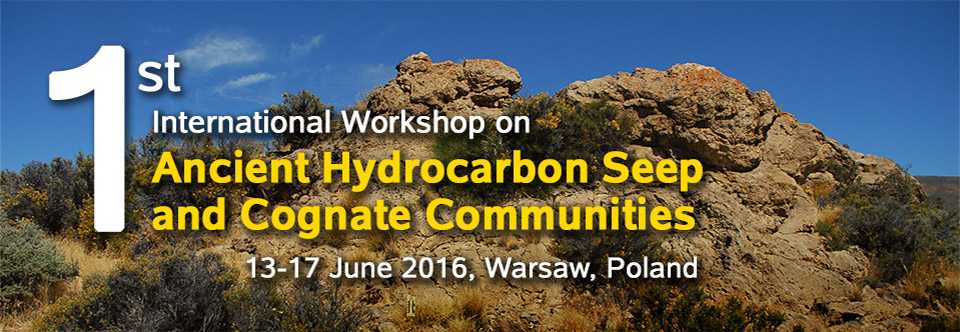
METHANE COLD SEEPS AS LATE CRETACEOUS REFUGIA
Tyler LEVITSKY1, Matthew P. GARB1, Neil H. LANDMAN2, Ekaterina LARINA3, Corinne E. MYERS4, Jone NAUJOKAITYTE1, and J. Kirk COCHRAN5
1Earth and Environmental Sciences, Brooklyn College, 2900 Bedford Ave, New York City, NY 11210, USA; 2Division of Paleontology (Invertebrates), American Museum of Natural History, Central Park West at 79th Street, New York City, NY 10024-5192, USA; 3Department of Earth Sciences, University of Southern California, 3651 Trousdale Pkwy, Los Angeles, CA 90089, USA; 4Department of Earth and Planetary Sciences, University of New Mexico, 1 Northrop Hall, Albuquerque, NM 87131, USA; 5School of Marine and Atmospheric Sciences, Stony Brook University, Stony Brook, NY 11794, USA.
Corresponding author: tlevitsky7@gmail.com
Methane cold seeps are widely documented in the Late Cretaceous Western Interior Seaway (WIS) of North America. Recent studies suggest that these seeps acted as refuges during times of environmental perturbation (e.g., ash falls or bottom water anoxia). Our study tested this hypothesis by examining changes in biodiversity across bentonite beds located near methane seeps. Bulk samples were collected above and below a 10 cm bentonite in the Pierre Shale near a methane seep exposed along a cut-bank of the Cheyenne River in Pennington County, SD. This seep was active during the Baculites compressus Zone within the upper Campanian. Simpson’s D was used to compare biodiversity below and above this ash fall event. Initial results show that the majority of species declined in abundance across the ash fall event with the exception of the inoceramids. The diversity index ranged from D = 0.18 at the lowest horizon below the bentonite to D = 0.0 at the highest horizon above the bentonite. The total number of species in the study area is 27. The most common species observed were Inoceramus proximus, I. perovalus, and Pecten kaufmanensis. Preliminary results indicate that seep-associated fauna were less negatively impacted by environmental perturbations such as ash falls than taxa far from seep localities under similar circumstances, such as those described by Perrier et al. (2012) and Waśkowska (2011). Thus, our study provides support for the methane seep refugia hypothesis.
References
Perrier, V., Meidla, T., Tinn, O., and Ainsaar, L. 2012. Biotic response to explosive volcanism; ostracod recovery after Ordovician ash falls. Palaeogeography, Palaeoclimatology, Palaeoecology 365–366: 166–183.
Waśkowska, A. 2011. Response of early Eocene deep-water benthic foraminifera to volcanic ash falls in the Polish Outer Carpathians; palaeocological implications. Palaeogeography, Palaeoclimatology, Palaeoecology 305: 50–64.
